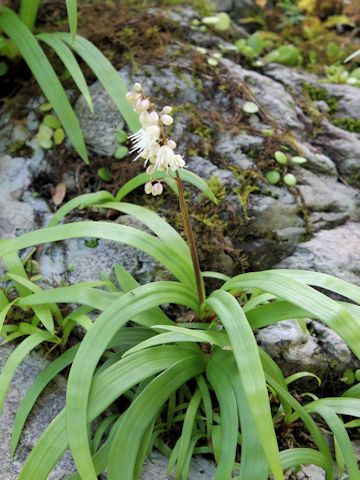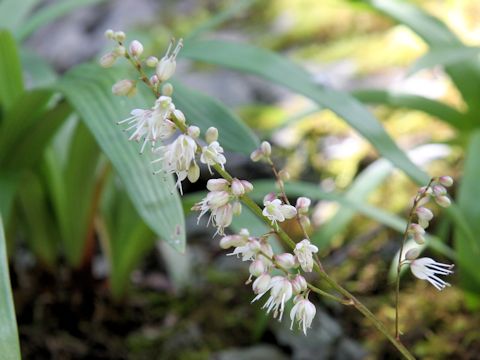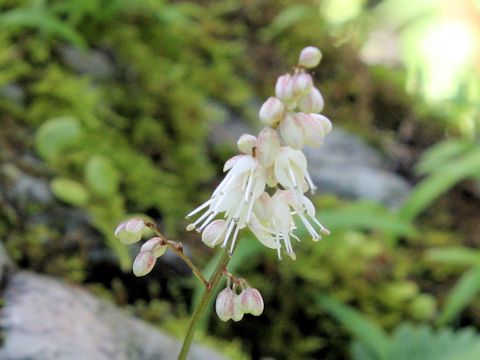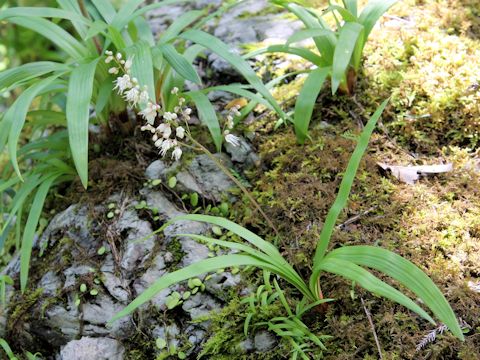 |








|

|
íªÌÅLíÅA{BÌÖnûȼ©çlEãBɪzµÄ¢Ü·BRn̼Á½âãɶ¦A³ÍPT`ROZ`ÉÈèÜ·Bª¶tÍü`ÅæÍ·ëèA¶EññÉÅÜ·BV©çW²ëAÔsð¾µÄóÔð¯AFÌÔð穹ܷBÔâÐÍUÂAYµ×àU èAäÞÍWFÅ·BʼÅu¢íº«µå¤iâÎÒjvÆàÄÎêÜ·B
|

|
È`V}[LVE®Ì½NÅAw¼Í Tofieldia nudaBp¼Í èܹñB
|

|
"Hana-zekisho" (Tofieldia nuda) belongs to Liliaceae (the Lily family). It is a perennial herb that is endemic to Japan and distributed westward from Kanto district of Honshu to Shikoku and Kyushu. Thus herb grows on the wettish rocks in mountains, and can reach 15-30 cm in height. The basal leaves are linear with elongate acute tips, and arranged in two rows. The flowering stalks are borne and the white flowers bloom in the racemes from July to August. The flower has six tepals and six stamens with pale purple anthers.
|

|
Od§¼ãsug£A¨vÉÄA2012N0709úBeB
|



